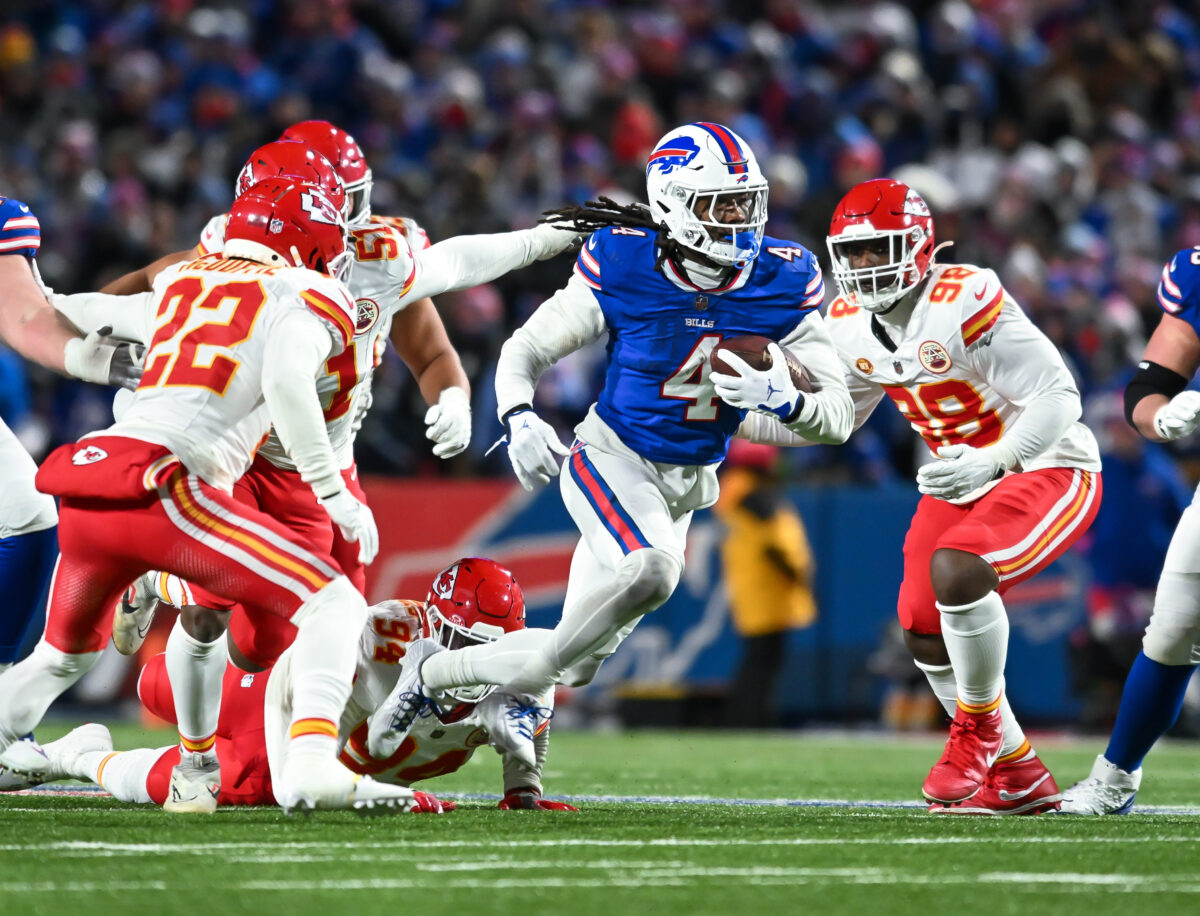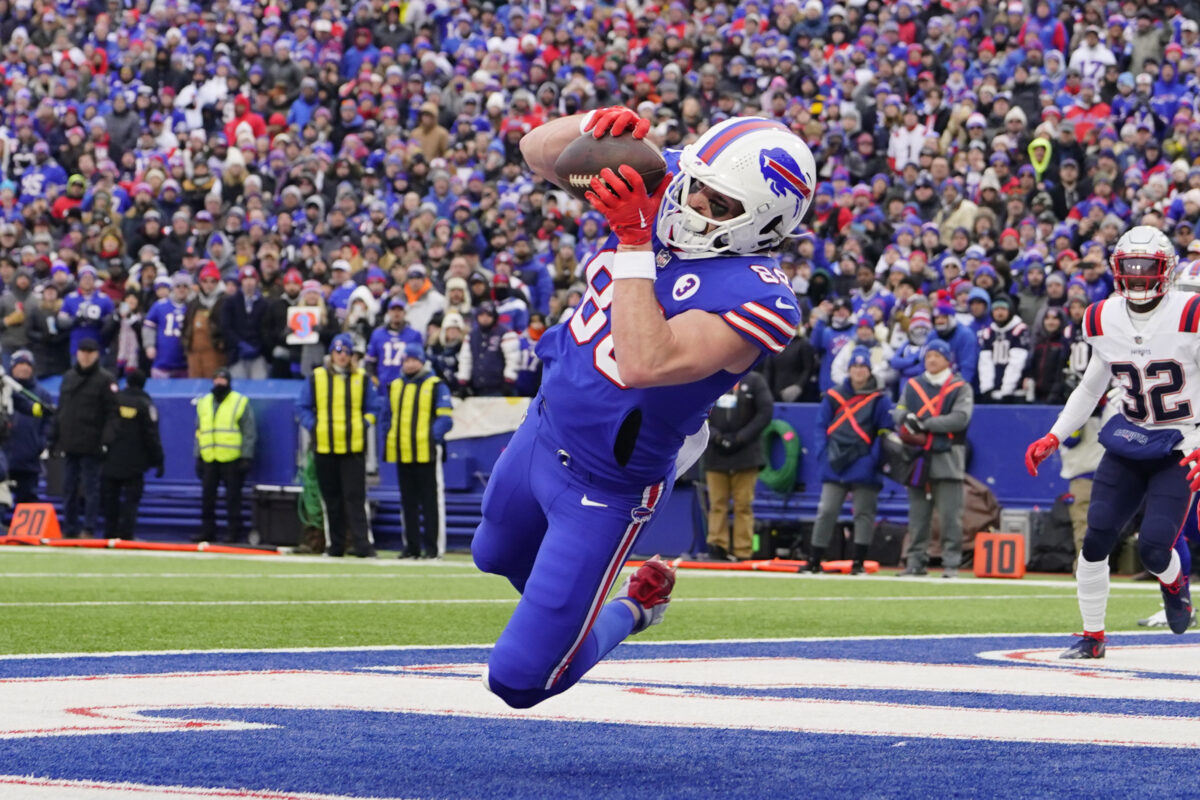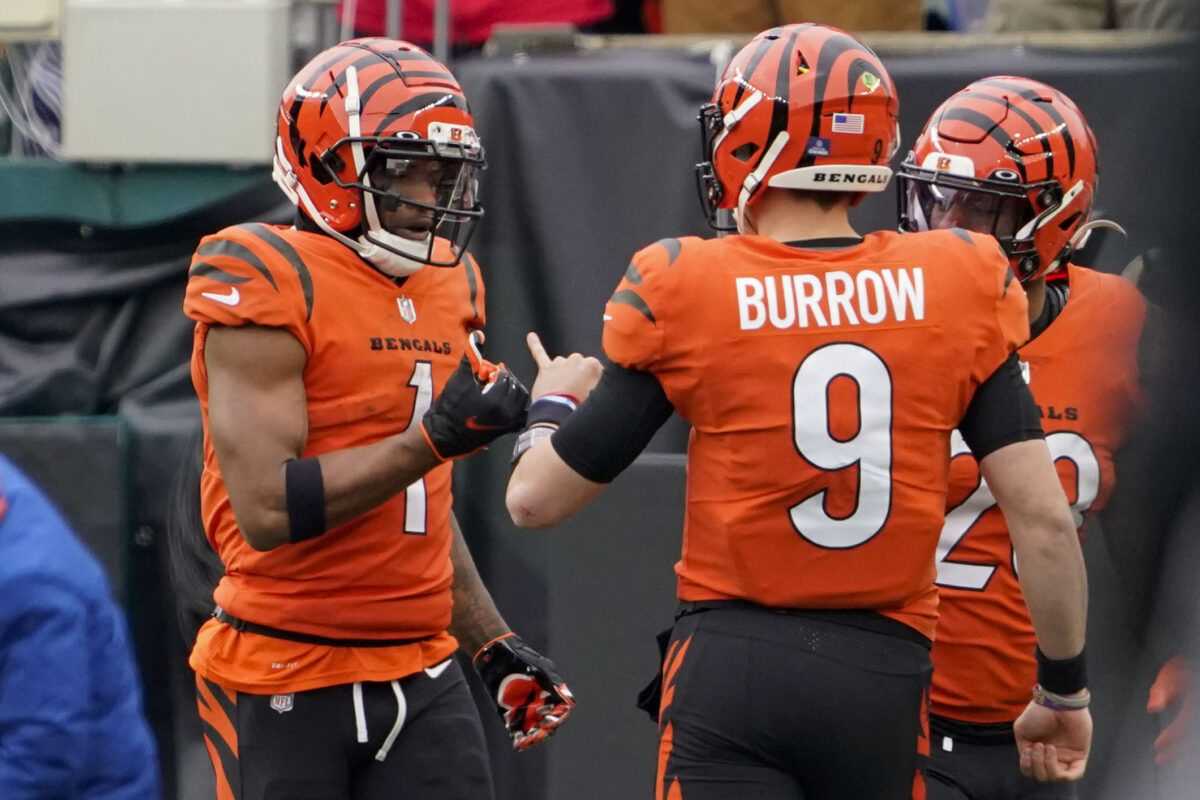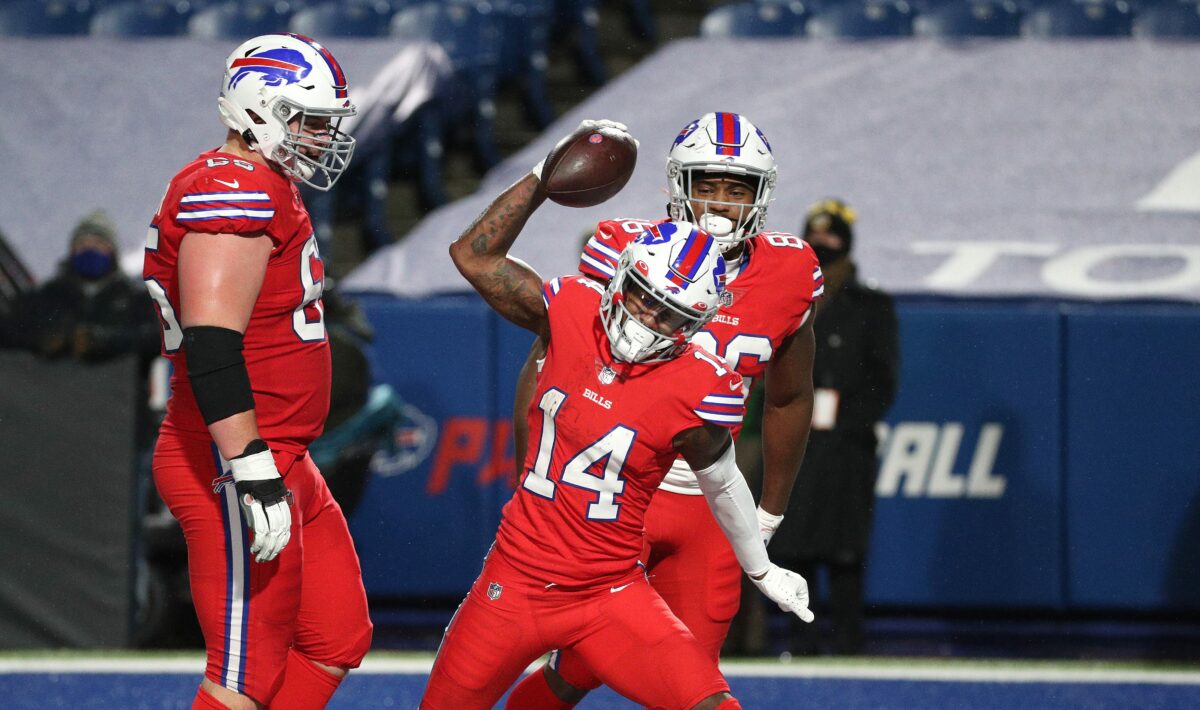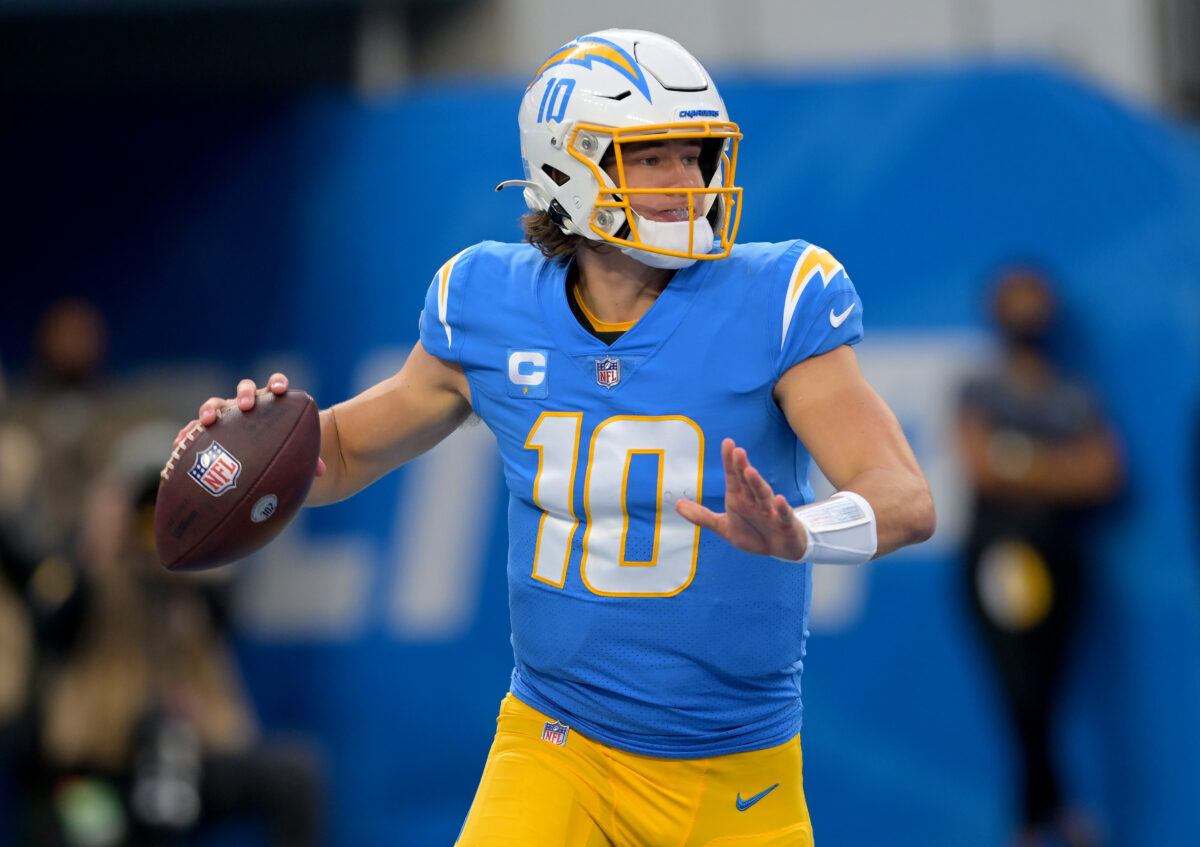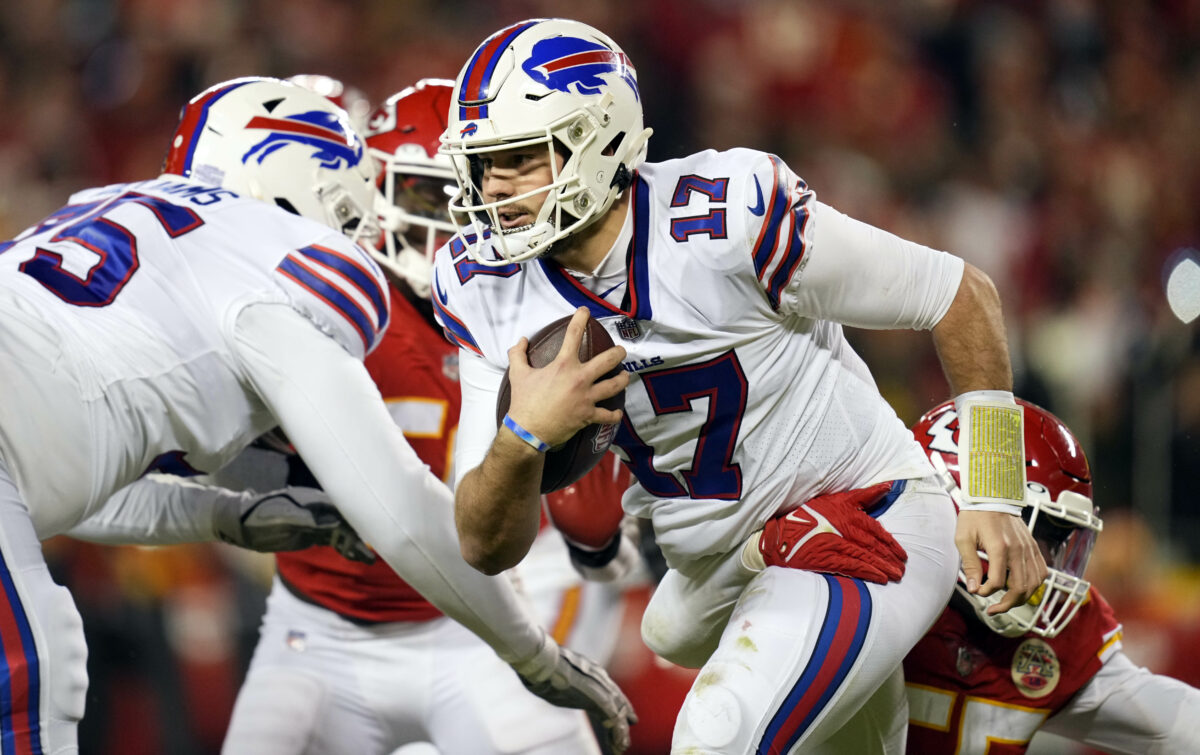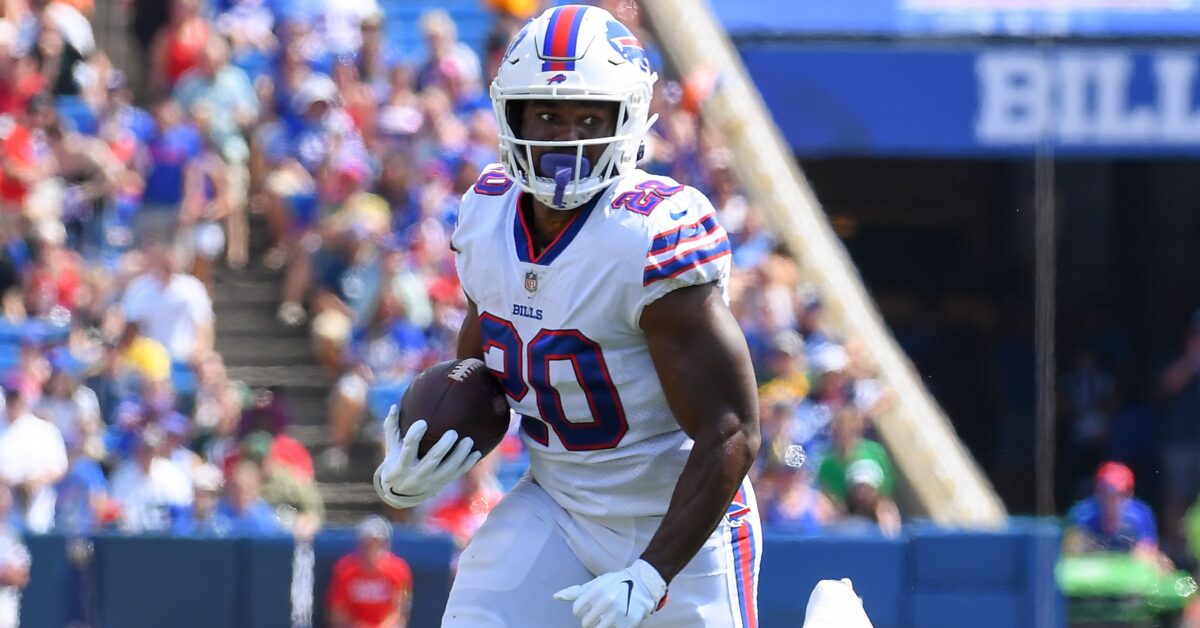Moss stands out among a crowded backfield.
With training camps and preseason games officially in the rearview mirror, it’s time to take a look at crowded depth chart positions and hopefully provide a little clarity as to what the 2021 season will look like in fantasy football.
A season ago, the Buffalo Bills ended New England’s stranglehold on the AFC East and then advanced to the AFC Championship Game before falling to Kansas City. While the rise of QB Josh Allen took center stage, Buffalo has also assembled a talented backfield that features a pair of Day 2 picks from the 2019 and 2020 drafts, respectively. Now the question becomes how that workload will be divvied up this season.
It’s not too late to sign up for The Huddle and dominate!
Of course, it’s worth pointing out that Allen was among the more prolific runners at the position, ranking fourth among QBs in carries (102) and eighth in yards (421). If that level of activity continues it will have the same trickle-down effect that Lamar Jackson has on the Baltimore running game, albeit on a smaller scale. Conversely, if Allen dials that aspect of his game back it could increase the Bills’ RBs workloads.
Devin Singletary fantasy football outlook
Selected 74th overall in 2019, Singletary has led the Bills in rushing in each of his first two seasons. There wasn’t much growth in Year 2, however, as his rookie year totals of 151 carries and 775 yards (5.1 YPC) were marginally better than the 156-687 (4.4 YPC) mark from 2020. The big plays also dried up with just three carries of 20-plus yards last season compared to seven in his debut campaign.
Singletary showed some strides as a receiver, increasing his receiving output from 29-194 as a rookie to 38-269, and he was more careful with the football (he reduced his fumbles from four to one).
Some of the shine seems to be off Singletary, though, as he is undersized and lacks big-time speed — he has scored just six times in 374 combined touches. Despite being the nominal starter, Singletary is best suited as an RB4.
Zack Moss fantasy football outlook
Moss followed Singletary as another third-round selection, coming off the board with the 86th pick last year. His final numbers weren’t great (112-481-4), but the then-rookie started seeing more action late in the year. In fact, over the team’s final three meaningful games, Moss logged 38 carries to Singletary’s 25.
Moss is clearly the more powerful of the two backs, which should allow him to be a bigger factor in the red zone, regardless of how many carries between the 20s are allocated in a given week.
Although he was used sparingly as a receiver last season (14-95-1), Moss’ hands and blitz pickup were considered above-average coming out of Utah.
It certainly feels like there’s more upside with Moss, who improved as his rookie year went along and will now have the benefit of a full offseason program with the team heading into his second season.
Moss may currently sit behind Singletary on the depth chart, but Moss’ upside is higher. This is going to be a true committee, and really may be closer to a hot-hand scenario. Allen, not Singletary, should be his biggest enemy for limiting touchdown opportunities.
Moss can be drafted to fill an RB3/flex role and may be leaned on for more if the Bills were to lose star WR Stefon Diggs for extended time.
Matt Breida fantasy football outlook
After spending his first three seasons with the San Francisco 49ers, Breida was traded to Miami before last year’s draft. It didn’t pan out. In a running back room that included both unproven (Myles Gaskin, Salvon Ahmed) and over-the-hill (Jordan Howard) options, Breida could never carve out on a meaningful role with the Dolphins.
A hamstring injury and a trip to the COVID list rounded out an inauspicious stint in south Florida with Breida setting career lows in carries (59), yards (254) and TDs (0).
Buffalo signed him in free agency in the hope they’ll see the 49ers version of Breida, who averaged 634 yards on 127 carries (5.0 YPC) and 2 TDs per year during his three seasons with the club.
He’ll operate behind Singletary and Moss in the backfield, but offensive coordinator Brian Daboll had Breida line up wide in the preseason, which could open some action on jet sweeps or quick passes to get him the ball in space. It’s unlikely to be enough to generate meaningful fantasy value, but Breida would be worth a look if either Moss or Singletary were to miss time.
